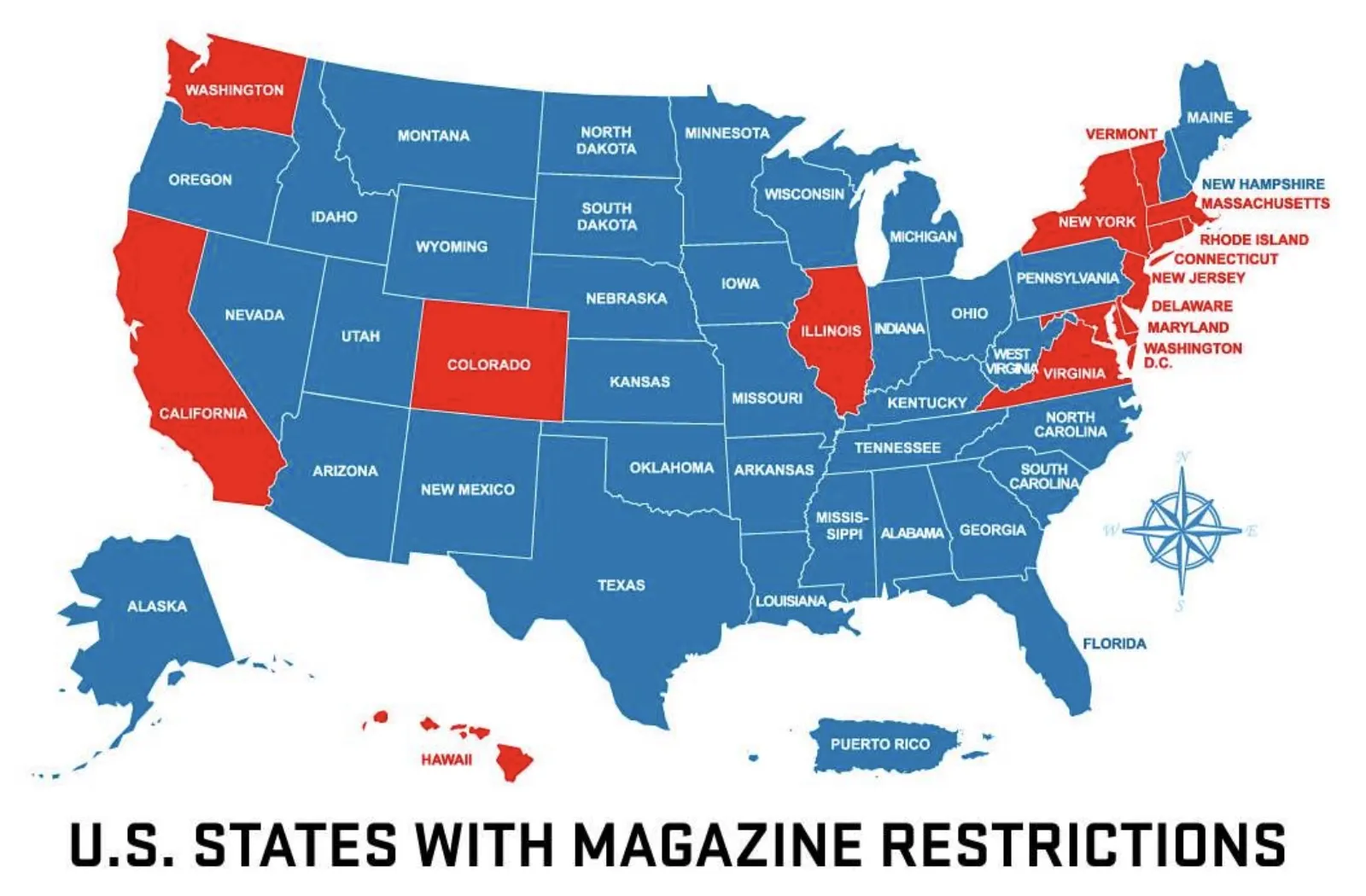HELENA — Montana Attorney General Austin Knudsen is leading a coalition of 27 states in a fight to protect what they say is a basic constitutional right: the ability to own standard-capacity gun magazines.
The coalition filed a legal brief with the U.S. Supreme Court asking justices to overturn California’s ban on magazines holding more than 10 rounds of ammunition. But this case isn’t just about magazines—it’s about whether courts will respect Supreme Court decisions on Second Amendment rights.
The Core Issue: What Counts as ‘Common Use’
At the heart of the legal battle is a simple question: Are magazines holding more than 10 rounds commonly used by law-abiding Americans for lawful purposes? Montana’s answer is an emphatic yes.
“California’s ban on large capacity magazines undermines our constitutional rights, which do not stop at state lines,” Knudsen said in announcing the brief.
The numbers back up Montana’s position. According to the brief, 48% of gun owners possess magazines holding more than 10 rounds, and Americans own an estimated 542 million of these magazines. They’re legal in at least 38 states and under federal law.
Popular firearms like the Glock 17—one of the most common handguns in America—come standard with 17-round magazines. The brief notes that magazines with greater capacity have existed for centuries, with Lewis and Clark carrying a 22-round air rifle on their famous expedition in 1804.
Courts Ignoring Supreme Court Precedent
Montana argues that federal appeals courts—particularly in liberal jurisdictions—are essentially ignoring recent Supreme Court decisions that strengthened Second Amendment protections.
The Supreme Court ruled in landmark cases like Heller and Bruen that Americans have a constitutional right to keep firearms “in common use today” for lawful purposes. But lower courts have been twisting these rulings to uphold gun restrictions anyway.
“This obvious error from the Nation’s largest circuit on a core issue of constitutional law warrants this Court’s review,” Knudsen states in the brief. “Only this Court’s review can correct these persistent misapplications, which deprive citizens of their fundamental rights, their property, and their ability to defend themselves.”
The brief criticizes courts for creating a “nuanced approach” that waters down the Supreme Court’s clear standards. Instead of following the established test—whether firearms or components are in common use—some courts are making their own judgments about what weapons are “useful for self-defense.”
Why Magazines Matter for Self-Defense
California and the Ninth Circuit Court of Appeals argued that magazine restrictions don’t violate the Second Amendment because the magazines themselves aren’t firearms. Montana calls this logic flawed.
The brief compares magazines to gas tanks in cars—technically, you could operate a vehicle without one, but it would severely limit functionality. Similarly, while a gun can fire without a magazine, that would leave someone vulnerable during the lengthy reloading process that magazines were invented to eliminate.
“If magazines and other components weren’t included, the Second Amendment would be a shallow right—easily infringed by basic indirect regulation,” the brief argues.
The coalition also disputes California’s claim that these magazines are “rarely used in self-defense.” The brief notes that Americans use firearms in self-defense 1.7 to 3 million times per year, and many of those incidents likely involve standard-capacity magazines, whether the gun is fired or simply displayed as a deterrent.
Historical Precedent
Montana argues that California’s ban has no historical foundation. Unlike other gun regulations that courts have upheld based on colonial-era laws, there’s no American tradition of limiting ammunition capacity.
The brief dismisses California’s historical comparisons to colonial gunpowder storage laws as irrelevant—those rules were about fire safety, not reducing gun violence. Similarly, historical bans on “trap guns” (firearms rigged to fire automatically) regulated inherently unlawful activity, unlike owning standard magazines for lawful purposes.
A Pattern of Judicial Defiance
The legal challenge goes beyond this single case. Montana’s brief includes maps showing how states with the most restrictive gun laws are concentrated in specific federal court circuits—the same circuits that keep upholding gun restrictions despite Supreme Court precedent.
“Lower courts are not faithfully applying this Court’s Second Amendment precedents,” the brief states, noting that courts have upheld blanket bans on AR-15 rifles, which the Supreme Court has called “America’s most common civilian rifle.”
The Stakes
For gun owners, the case represents a critical test of whether the Supreme Court’s recent pro-Second Amendment decisions will be meaningfully enforced or gradually undermined by hostile lower courts.
The brief warns that without Supreme Court intervention, states will have “a regulatory blank check” to chip away at Second Amendment rights through indirect restrictions on ammunition, magazines, and other firearm components.
The coalition includes attorneys general from Idaho, Alabama, Alaska, Arkansas, Florida, Georgia, Iowa, Indiana, Kansas, Kentucky, Louisiana, Mississippi, Missouri, Nebraska, New Hampshire, North Dakota, Ohio, Oklahoma, South Carolina, South Dakota, Tennessee, Texas, Utah, West Virginia, Wyoming, and the Arizona Legislature.
The Supreme Court will decide whether to hear the case, which could determine the fate of magazine restrictions nationwide and clarify how seriously lower courts must take Second Amendment precedents.
